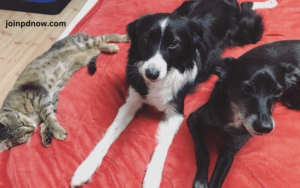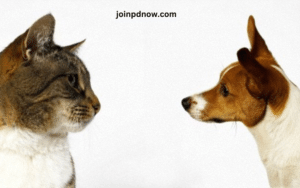When a cat finds itself being sat on by a dog, its reaction can range from fear and anxiety to aggression or submission. Cats are solitary hunters with a strong sense of territory and personal space, Cats’ Reactions to Being Sat on by Dogs so the sudden intrusion of a larger animal can be extremely stressful for them. Some cats may freeze or attempt to escape, while others may display defensive behaviors such as hissing, swatting, or biting. Alternatively, some cats may exhibit submissive behaviors, such as rolling onto their back or licking the dog’s muzzle, as a way to avoid confrontation and diffuse tension. Understanding the individual temperament and past experiences of the cat, as well as the dynamics of its relationship with the dog, is crucial in interpreting and addressing its reaction to being sat on.
Introduction
Cats and dogs, often portrayed as natural enemies, can sometimes find themselves in amusing or even tense situations. One such scenario is when a cat finds itself being sat on by a dog. While this may seem like a harmless or comical situation to some, it can actually provoke various reactions from our feline friends. In this in-depth article, we’ll delve into the reasons behind cats’ reactions to being sat on by dogs, how they perceive such encounters, and what pet owners can do to ensure harmony in multi-pet households.
Understanding the Instinctual Dynamics
To comprehend why cats react the way they do when sat on by dogs, it’s crucial to understand the innate instincts of both species. Cats are solitary hunters by nature, with a strong sense of territory and personal space. Conversely, dogs are pack animals, often displaying dominance and submission behaviors within their social structure.
When a dog sits on a cat, it can be interpreted by the cat as an intrusion of their personal space or even as an act of dominance. This can trigger various responses from the cat, ranging from fear and anxiety to aggression or submission.

Cats’ Reactions to Being Sat On
One of the most common reactions exhibited by cats when sat on by dogs is fear and anxiety. Cats are creatures of habit and prefer predictable environments. The sudden presence of a larger animal invading their space can be extremely stressful for them. They may freeze, hiss, or attempt to escape the situation altogether.
Cats may also display signs of anxiety such as flattened ears, dilated pupils, and a tense body posture. It’s essential for pet owners to recognize these signals and intervene appropriately to alleviate their cat’s distress.
Aggression and Self-Defense
In some cases, a cat’s response to being sat on by a dog may escalate to aggression. This can manifest as swatting, scratching, or even biting. When feeling threatened or cornered, cats may resort to defending themselves using their natural weapons.
Aggression towards the dog may also stem from the cat’s attempt to establish dominance or reclaim its territory. This behavior can lead to conflicts between the two pets if not addressed promptly by the pet owner.
Submission and Appeasement
On the opposite end of the spectrum, some cats may display submissive behaviors when sat on by dogs. This can include rolling onto their back, exposing their belly, or licking the dog’s muzzle as a sign of appeasement.
Submissive behaviors are often a cat’s way of avoiding confrontation and diffusing tension in the presence of a perceived threat. However, it’s essential for pet owners to ensure that the dog understands and respects the cat’s boundaries to prevent any potential harm or stress.

Managing Interactions Between Cats and Dogs
To promote harmony between cats and dogs in a multi-pet household, it’s crucial for pet owners to establish clear boundaries and provide each animal with their own space. This can include designated feeding areas, resting spots, and separate litter boxes for cats.
Additionally, pet owners should supervise interactions between their pets and intervene if any signs of discomfort or aggression arise. Providing plenty of vertical space, such as cat trees or shelves, can also allow cats to escape to a safe haven when needed.
Positive Reinforcement
Encouraging positive interactions between cats and dogs through rewards and praise can help foster a sense of camaraderie between the two species. Offering treats or toys when they exhibit calm or friendly behavior towards each other can reinforce positive associations and reduce tension.
Consistency is key when implementing training and reinforcement techniques, and pet owners should remain patient and persistent in their efforts to promote harmony between their pets.
Conclusion
In conclusion, cats’ reactions to being sat on by dogs can vary widely depending on their individual temperament, past experiences, and the dynamics of their relationship with the dog. Understanding the instinctual behaviors of both species is crucial in mitigating conflicts and ensuring a peaceful coexistence in multi-pet households.
By establishing clear boundaries, providing adequate space and supervision, and encouraging positive interactions through reinforcement, pet owners can help their cats and dogs develop a harmonious relationship built on mutual respect and understanding. With patience, empathy, and proactive management, cats and dogs can learn to coexist peacefully and even form lasting bonds that enrich the lives of both pets and their owners.